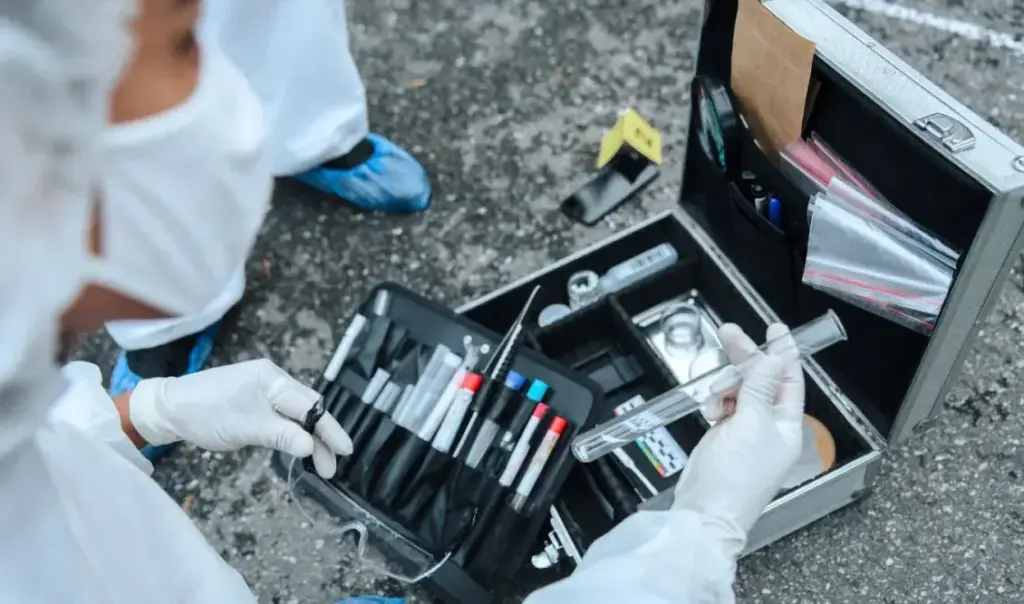The cases of Mourtzoukou and Pispirigkou and the findings regarding the Forensic Service of Patras led the Ministry of Justice to take drastic measures for the radical reorganization of forensic services. With a tablet, voice-activated description and automatic drafting of forensic reports by a digital assistant, forensic doctors in Greece will now perform autopsies and post-mortem examinations.
Delays in drafting forensic reports reached up to three years, a fact that even led to the acquittal of defendants by courts, while the lack of any rules for mandatory content and the “medieval” approach to technology use in forensic procedures (everything still done with “paper and pencil”) created the image of a service in dissolution.
Under these circumstances, the relevant Ministry has initiated an emblematic reform two years ago, according to international standards and technological developments, alongside disciplinary audits of forensic doctors for serious disciplinary offenses (2024-2025) with the imposition of disciplinary penalties. It is reminded that the operation of the Patras Forensic Service was recently suspended and so far 4 forensic doctors are on potential leave (3 were involved in the Pispirigkou case), 3 have been imposed disciplinary penalties (one-year suspension, fine, reprimand) and disciplinary proceedings are pending for 2.
Digital autopsies and artificial intelligence
In a few months, Greek forensic doctors will have at their disposal an Information System that combines advanced computer technologies and artificial intelligence. Essentially, they will have a digital assistant during forensic procedures, which will greatly accelerate their work, benefiting faster and more effective administration of justice.
This is a major innovation, unique worldwide, that will be implemented by the University of Piraeus and will be completed by the end of 2025. As you can see in the video, the Information System, installed on a tablet, will be able to receive images of the body on which the forensic doctor is operating. At the same time, the forensic doctor, through voice function, will provide oral description of what they observe regarding the body.
Subsequently, the Information System, referring to forensic data and image databases and using AI technology, will process the images and voice data entered by the forensic doctor, resulting in the automatic drafting of a forensic report outline.
The Information System will make a logical connection of the findings to present the forensic doctor with an assessment regarding the cause of death, the conclusions arising from the images and descriptions that they have entered into the system, giving the forensic doctor a first impression of the case, which is based on the scientific data of forensic science.
After the automatic drafting of the outline, the forensic doctor will be able to edit the report text in order to make additions or changes if, according to their reasoned scientific judgment, they believe that the initial conclusion of the Information System is not the one they reach.
In this way, the risk of erroneous assessment by the forensic doctor is drastically reduced, as well as the time required for the correct, complete and scientifically documented drafting of the forensic report. The Information System of the State Forensic Service constitutes a valuable and necessary tool that, together with administrative reorganization, brings a “new era” to forensic investigation of serious cases, such as domestic or gender-based violence, cases with minor victims, as well as rape or sexual abuse cases, in faster report drafting, and in transparency of every step so that there are no disputes from the parties involved.
What changes in forensic services
Apart from the disciplinary audits that have already been carried out, the Ministry of Justice, for the two years since it started the relevant reform, has also proceeded with the recruitment of 32 forensic doctors while it has also changed the way of recruiting mortuary technicians, without bureaucratic obstacles.
At the same time, it organized the country’s Forensic Services into a Public Service structure, under the newly established General Directorate of Forensic Medicine in the Ministry of Justice.
The minimum mandatory content for the forensic report was determined and a Three-Member Committee was established for the re-evaluation of forensic reports. This Committee can intervene after a prosecutorial order or after requests from individuals in cases where there are assessments that something is not right. Also, a Code of Ethics and Protocols related to forensic medicine is being drafted.
Toxicology laboratories were established in Piraeus and Patras and initiatives have been undertaken for new mortuaries in Athens and Thessaloniki (2025), while there has been provision both for the burial of dozens of unclaimed bodies for at least three years from the Athens mortuary in Schistos cemetery and for the unclaimed bodies of other mortuaries in the country.




